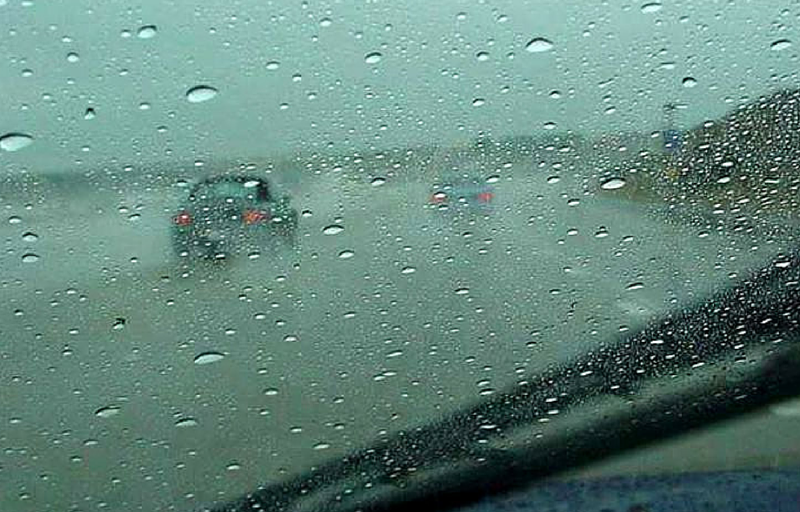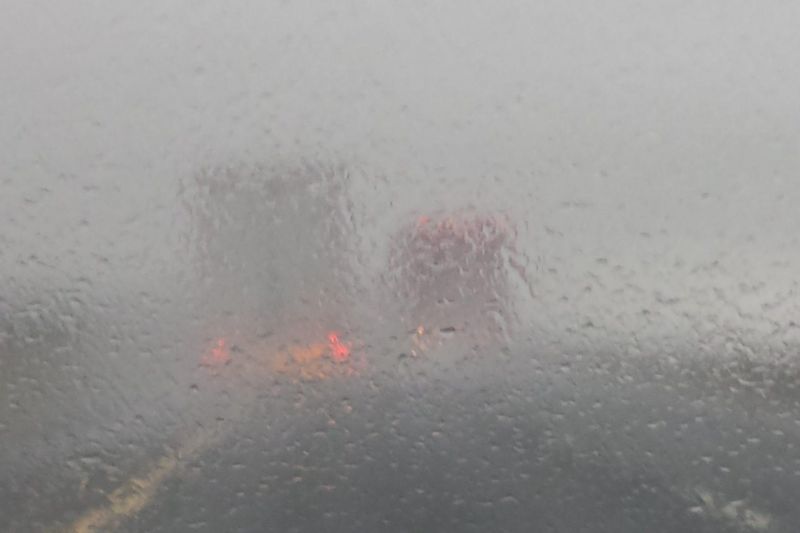Storms can be scary – not just for little kids and dogs! For road users caught in the midst of a dramatic downpour, it can be frightening.
- It’s not illegal to stop driving when it’s raining – but you need to do so safely
- Heavy rain may make you feel like you can’t keep going, but move away from the roadway if possible
- You can’t be fined for trying to be safe, but you could still be involved in an accident if you don’t think about your actions
There have probably been instances when you’ve been driving and thought: “I can’t see what’s in front of me, the rain is so heavy!”.
And in that instance, you might also have wondered if it is legal to stop driving because the rain is so heavy. Well, thankfully, the answer is clearer than the view out your windscreen in a torrential gush.
In short, if you can pull off the road safely and not impede traffic, that’s the best course of action.
You might have seen other drivers pull over on the hard shoulder of the motorway in serious rain, and some even drive until they can park under an overpass – a good shout if there’s hail involved.
If you continue driving, you should slow down, keep a greater distance between you and other vehicles. Your stopping distance is far worse in wet conditions, and potentially dramatically different if there’s standing water on the road, or if the rain has hit after a long dry period, as dried fuel, oils and other debris built up on the surface can make it even slipperier.
The best general advice is that, if you cannot see the edges of the road, or other cars or vehicles on the road around you from a safe distance while you’re still moving, then it would be advisable to pull off the road.
However if there’s nowhere to stop, you might want to consider pulling over as far to the left as you can, if it’s a multi-lane road. And if you stop or slow down to a pace lower than other road users, activate your hazard lights to alert other road users.
Remember, if you can’t see the road or anyone else driving, they probably can’t see you, either!
This is part of why your windscreen wipers are an important element of the roadworthy requirements – you should be able to use them in different circumstances to an effective standard that will allow you to see out in alternate inclement weather conditions.
Tyres, too, play a big part in your ability to deal with weather emergencies – if your tyres (and your brakes, for that matter) aren’t up to the job of slowing you down safely, the outcome could be disastrous. If you don’t have auto headlights on your car, make sure you activate your lights, so people can see you from the front and the rear of your vehicle.
Queensland Police state that drivers should double their distance, allowing four seconds between cars, and heavier vehicles (or those towing trailers or caravans) should allow eight seconds between them and the vehicle ahead. It’s a good piece of advice, but may be hard to measure if you’re stressed by the rain, the traffic, and you can’t see any side markers to judge that distance by counting the gap.
What about simply stopping dead in your tracks? While newer cars (with newer tyres) might be able to cope with a sudden wet weather halt, it’s definitely not advisable, even if not strictly against the law. Sudden braking may cause you to lose traction, and therefore control, of the car.
ACT police suggest that road users should “drive to the conditions” and state that: “If heavy rain, hail, sleet or snow make driving too difficult, pull over safely to the side of the road and wait until conditions improve.”
Transport NSW’s message is similar: “If you’re driving and conditions get worse, pull over to a safe place. Wait until conditions improve. When you cannot avoid driving in poor conditions, slow down, drive carefully and increase your visibility by using your day running lights or headlights. Stay informed about the weather by listening to the radio. You may need to change your route to avoid driving into danger.”
You may be tempted to activate your hazard lights to increase your vehicle’s visibility, and you shouldn’t get in trouble from the police for using those flashers if you are “stopped in a hazardous position… or when you’re driving in hazardous conditions such as fog or rain”.
Not intended as legal advice. Check with the relevant roads authority in your state or territory.


